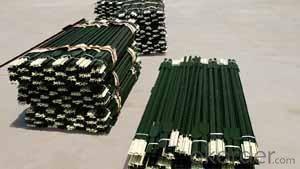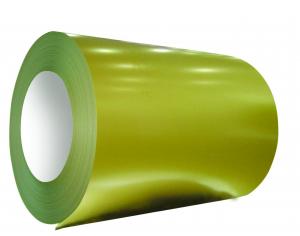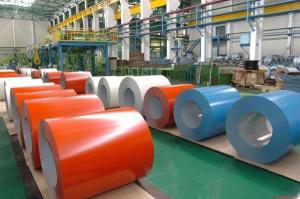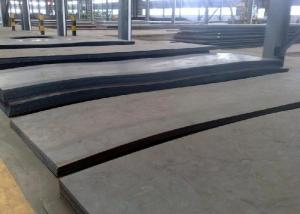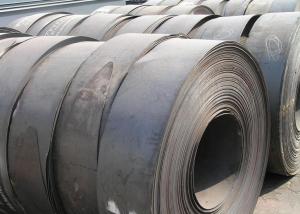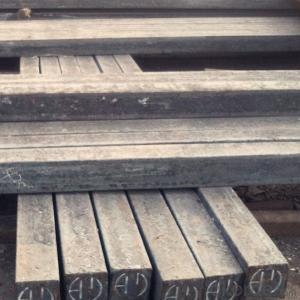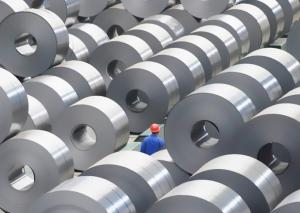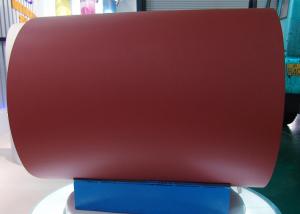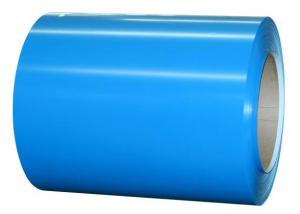T POST AND L POST
- Loading Port:
- China Main Port
- Payment Terms:
- TT OR LC
- Min Order Qty:
- -
- Supply Capability:
- -
OKorder Service Pledge
OKorder Financial Service
You Might Also Like
1、FEATURES :
Our products T fence post,Stud T fence post and L fence post and relational
product are mainly used in Grapery,Farm,Industrial park,National security and so on.
2、PROCESSING :
(1) Electrostatic spraying
(2) Electrostatic spraying after hot-dip galvanizing
3、PACKING :
Wrapped with plastic film rushen,play care(used wood care/plywood)
Stud T post :
Black Post (Non-painted Without Spade) | ||||||||
Light Duty
| 0.83LBS/FT | 4' | 5' | 6' | 7' | | | |
0.85LBS/FT | 4' | 5' | 6' | 7' | | | | |
0.90LBS/FT | 4' | 5' | 6' | 7' | | | | |
0.925LBS/FT | 4' | 5' | 6' | 7' | | | | |
0.95LBS/FT | 4' | 5' | 6' | 7' | | | | |
Regular Duty | 1.10LBS/FT | 4' | 5' | 6' | 7' | 8' | 9' | 10' |
1.15LBS/FT | 4' | 5' | 6' | 7' | 8' | 9' | 10' | |
1.25LBS/FT | 4' | 5' | 6' | 7' | 8' | 9' | 10' | |
Heavy Duty | 1.33LBS/FT | 4' | 5' | 6' | 7' | 8' | 9' | 10' |
Fence post :
Fence Post | |||||||
Size (mm) | Length (cm) | ||||||
T-post | | ||||||
30*30*3.0 | 100 | 125 | 150 | 175 | 200 | 225 | 250 |
30*30*3.2 | 100 | 125 | 150 | 175 | 200 | 225 | 250 |
30*30*3.5 | 100 | 125 | 150 | 175 | 200 | 225 | 250 |
35*35*3.5 | 100 | 125 | 150 | 175 | 200 | 225 | 250 |
35*35*3.8 | 100 | 125 | 150 | 175 | 200 | 225 | 250 |
35*35*4.0 | 100 | 125 | 150 | 175 | 200 | 225 | 250 |
L-post | | ||||||
25*25*3.0 | 100 | 120 | 150 | 200 | 225 | | |
- Q: What are the different types of steel pipes and tubes?
- There are several different types of steel pipes and tubes, including seamless pipes, welded pipes, galvanized pipes, stainless steel pipes, and structural tubes.
- Q: How is steel used in the manufacturing of water treatment systems?
- Steel is commonly used in the manufacturing of water treatment systems due to its durability, strength, and resistance to corrosion. It is often used to construct tanks, pipes, and other components that come into contact with water, ensuring the system's longevity and reliability.
- Q: How is steel used in the manufacturing of material handling equipment?
- Steel is commonly used in the manufacturing of material handling equipment due to its strength, durability, and versatility. It is used to create the frames, supports, and components of various equipment such as forklifts, cranes, conveyors, and storage racks. Steel's high tensile strength allows these equipment to handle heavy loads and withstand the rigors of daily use in industrial environments. Additionally, steel can be easily shaped, welded, and machined, making it an ideal choice for creating complex and customized designs required in material handling equipment.
- Q: How do steel products contribute to the manufacturing and industrial sector?
- Steel products contribute significantly to the manufacturing and industrial sector in various ways. Firstly, steel is a versatile and durable material that is used in the production of a wide range of products, from machinery and equipment to construction materials and vehicles. Its strength and structural integrity make it essential for creating safe and reliable products. Additionally, steel is a crucial component in the manufacturing process itself. It is used in the construction of factories and industrial facilities, providing a sturdy framework for production lines and machinery. Steel is also used in manufacturing equipment, such as molds, dies, and cutting tools, which are essential for shaping and forming various materials. Moreover, steel products play a vital role in transportation and infrastructure. From bridges and railways to ships and automobiles, steel provides the necessary strength and resilience to support heavy loads and withstand harsh environmental conditions. The construction and maintenance of these transportation and infrastructure systems further drive economic growth and development. Overall, steel products are indispensable in the manufacturing and industrial sector due to their versatility, durability, and crucial role in various industries. Their contribution extends not only to the production of goods but also to the development of infrastructure, transportation, and economic progress.
- Q: How is steel used in the production of automotive components?
- Steel is used in the production of automotive components due to its strength, durability, and affordability. It is commonly used to make parts such as the body frame, engine components, suspension systems, and exhaust systems. The high strength of steel ensures the safety and structural integrity of the vehicle, while its durability allows the components to withstand harsh conditions and prolonged usage. Additionally, steel's cost-effectiveness makes it a preferred choice for manufacturers, enabling them to produce reliable and affordable automotive components.
- Q: What are the properties of stainless steel for medical equipment?
- Stainless steel used in medical equipment possesses several important properties. Firstly, it is highly resistant to corrosion, which is crucial in medical settings where cleanliness and sterility are paramount. Additionally, stainless steel is durable and can withstand frequent cleaning and sterilization processes without losing its structural integrity. It is also non-magnetic, making it safe for use in magnetic resonance imaging (MRI) machines. Furthermore, stainless steel is biocompatible, meaning it is not toxic or harmful to the human body, making it suitable for implants and surgical instruments. Overall, the properties of stainless steel make it an ideal material for medical equipment due to its corrosion resistance, durability, non-magnetic nature, and biocompatibility.
- Q: What are the key characteristics of stainless steel?
- Some key characteristics of stainless steel include its high resistance to corrosion, its durability and strength, its low maintenance requirements, and its ability to withstand high and low temperatures. It also has a sleek and polished appearance, making it popular in various industries such as construction, automotive, and kitchenware.
- Q: What are the different types of steel chains and their uses in lifting equipment?
- There are primarily three types of steel chains used in lifting equipment: alloy steel chains, carbon steel chains, and stainless steel chains. Alloy steel chains are incredibly strong and durable, making them suitable for heavy-duty lifting applications. Carbon steel chains are more affordable and offer decent strength, making them commonly used in medium-duty lifting tasks. Lastly, stainless steel chains are corrosion-resistant and often used in industries where exposure to moisture or chemicals is expected. Each type of steel chain has distinct properties that make them suitable for specific lifting needs.
- Q: What are the different types of steel plates and sheets available?
- There are several types of steel plates and sheets available, including hot rolled steel plates, cold rolled steel plates, galvanized steel plates, stainless steel plates, and alloy steel plates. Each type has its own unique properties and uses in various industries.
- Q: What is the process of steel casting?
- The process of steel casting involves melting steel in a furnace, pouring the molten metal into a mold, and allowing it to cool and solidify into the desired shape. The mold is usually made of sand or ceramic materials, which are carefully prepared and shaped to create the desired design. Once the steel has solidified, the mold is removed, and the casting is cleaned and finished to meet the required specifications.
Send your message to us
T POST AND L POST
- Loading Port:
- China Main Port
- Payment Terms:
- TT OR LC
- Min Order Qty:
- -
- Supply Capability:
- -
OKorder Service Pledge
OKorder Financial Service
Similar products
Hot products
Hot Searches
Related keywords
